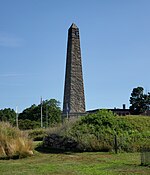Long Hill, Groton, Connecticut
Census-designated places in ConnecticutCensus-designated places in New London County, ConnecticutGroton, ConnecticutNeighborhoods in ConnecticutUse mdy dates from July 2023

Long Hill is a census-designated place (CDP) in the town of Groton in New London County, Connecticut, United States. The population was 4,205 at the 2010 census.
Excerpt from the Wikipedia article Long Hill, Groton, Connecticut (License: CC BY-SA 3.0, Authors, Images).Long Hill, Groton, Connecticut
Wayne Road,
Geographical coordinates (GPS) Address Nearby Places Show on map
Geographical coordinates (GPS)
| Latitude | Longitude |
|---|---|
| N 41.354444444444 ° | E -72.056666666667 ° |
Address
Wayne Road 85
06340
United States
Open on Google Maps








